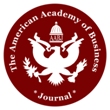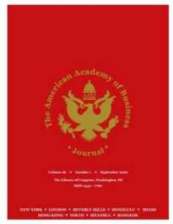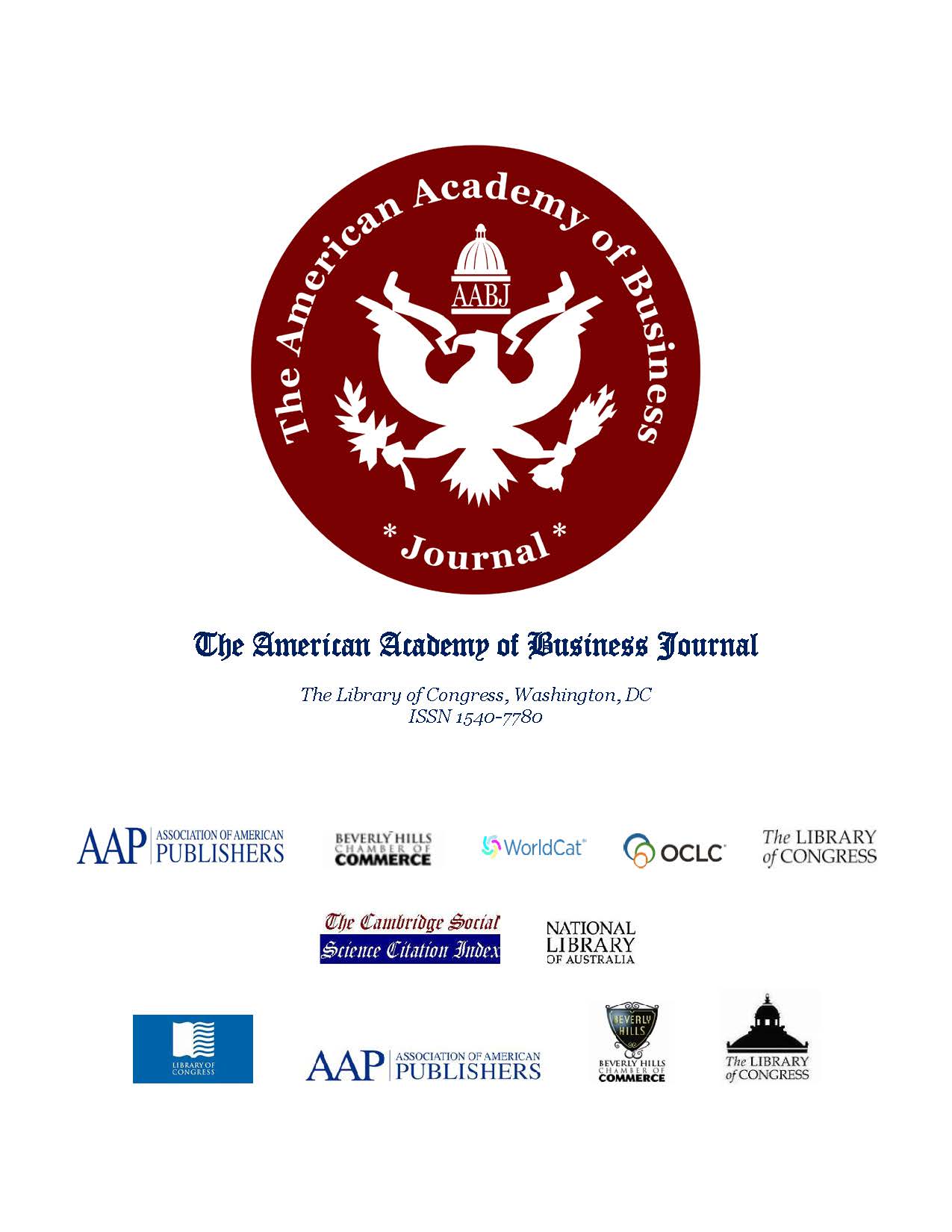|
Classification of Stock
Market Price Change by Data Mining
Dr. Nursel Selver Ruzgar,
Ryerson University, Toronto, Canada
ABSTRACT
In this paper, eight
Canadian banks’ daily stock market price changes are examined by three data
mining techniques, logistic regression, fuzzy-roughNN and genetic algorithms.
Thirty-seven years of data from 1980 to 2017 obtained from NASDAQ for eight
Canadian banks with 21 independent variables and one dependent variable, price,
were used to classify the daily stock price changes. Daily price changes are
divided into three classes, “up”, “down” and “same” according to the previous
stock market daily close price. To determine which method makes the better
classification, three methods run separately for each bank. Then predicted
values for 2018 with each method for each bank, were compared the original 2018
data to see how the predicted values were compatible with the real values. It
was seen that, among the three methods, the genetic programming algorithms
classified the stock price changes well. This paper demonstrates that the
genetic programming method is applicable to a wide range of practical problems
pertaining to price changes. Moreover, the results show that the genetic
programming is a promising alternative to the conventional methods for financial
prediction.
Data mining (DM) and
knowledge discovery is a family of computational methods that aim at collecting
and analyzing data related to the function of a system of interest to gain a
better understanding of the system (Triantaphyllou, 2010).
DM attempts to formulate,
analyze and implement basic induction processes that help extract meaningful
information and knowledge from unstructured data. DM that aims to reveal
valuable information from the overwhelming volume of data and achieve better
strategic management and customer satisfaction is the process of using
statistical, mathematical, artificial intelligence, and machine learning
techniques to extract and identify useful information and knowledge assembled
from large databases (Kusrini, 2009).
Full Text
*
Google
Scholar Index1 *
Google
Scholar Index2
Cited by: 2
Learning from WhatsApp’s
Business Model: The World of Messaging Apps
Dr. Nadeem M. Firoz, Baruch
College, CUNY, New York, NY
Atif Noor, Founder & CEO,
Adaptly-AI.com, Baruch College, CUNY, New York, NY
ABSTRACT
The objective of this
proposal is to determine WhatsApp’s positioning within the social media
marketplace, analyze its strengths and weaknesses, and propose actionable
strategic marketing models which will allow the service to further increase its
user base by curtailing weaknesses and exponentiating strengths. This proposal
will follow the service from its inception as a startup in Mountain View
California to becoming the most popular messaging app in the world after being
acquired by Facebook. Its features will be dissected and its value to the
marketplace will be closely analyzed. The demographics, geodemographics and user
segmentation of the service will be ascertained; along with its business models,
marketing positioning, and SWOT analysis. Through diligent and thoughtful
analysis of WhatsApp’s SWOT, viable options for growth and further market
capitalization will become evident, and recommendations for implementation will
be established. WhatsApp is a cross-platform messaging and Voice over IP (VOIP)
service that allows users to send text messages and video calls, along with
other rich media such as audio, images, documents, and even video calls. (whatsapp.com)
The service was created by WhatsApp Inc. in Mountain View, California by
founders Brian Acton and Jan Koum, who previously worked for Yahoo! (Forbes.com)
After leaving Yahoo! in 2007, they applied to jobs at Facebook, but failed to
get hired. Ironically, after the they were rejected jobs at Facebook, their
company was acquired by Facebook in February 2014 for close to $19.3 billion
dollars (techcrunch.com). By early 2018, the product had accumulated over 1.5
billion users, making it the most popular messaging app in the market. (Forbes.com)
Full Text
*
Google
Scholar Index1 *
Google
Scholar Index2
Collaborative Strategies
in the Context of the Tourism Cluster in the Azores: A Qualitative Analysis
Antonia Canto, University
of the Azores, Portugal
Anhelina Bykova, University
of the Azores, Portugal
Dr. Joao Couto, University
of the Azores, Portugal
Abstract
The main objective of this
study is to discuss the collaborative strategies within the tourism cluster on
the Azores. A qualitative research framework was developed and responses
obtained through interviews with 30 regional stakeholders were analyzed using
the MaxQDA and NVivo programs. The results highlighted the existence of dynamics
and collaboration between the regional tourism partners. The study reveals that
the most dynamic partners are car rental companies, restaurants, tours
companies, and hotels. Promoting collaboration is crucial for developing a
tourist destination. For collaboration to be successful, it is important to
establish collaborative strategies. There are several definitions of the
concept, according to Child, Faulkner, Tallman, and Tallman (2005);
collaborative strategies are an attempt by organizations to achieve their goals
through cooperation with other organizations rather than competing with them.
This work attempts to delineate a framework of collaborative strategies among
several tourism cluster actors in the Azores region. A thorough analysis of the
interviews collected from the various actors in this sector is undertaken.
Particular attention is paid to the type of activity and to the location of such
activity, so as to reasonably cover the tourism cluster in the Azores. First,
we present the concepts of collaborative strategies and the tourism cluster,
observing their evolution and complexity, and highlight the various
contributions of several researchers in this field of study. Second, the method
and instruments for gathering information are presented, together with the
procedures undertaken in the elaboration of this study.
Full Text
*
Google
Scholar Index1 *
Google
Scholar Index2
Efficiency Changes in
the Home and Community-based Services of Long-term Care in Taiwan
Chia-Mei Shih, Department
of Resources Engineering, National Cheng Kung University, Tainan, Taiwan
Yu-Hua Wang, Institute of
Gerontology, National Cheng Kung University, Tainan, Taiwan
Dr. Li-Fan Liu, Professor,
Institute of Gerontology, National Cheng Kung University, Tainan, Taiwan
Jung-Hua Wu, Department of
Resources Engineering, National Cheng Kung University, Tainan, Taiwan
ABSTRACT
Global aging trends have led to dilemmas in resource
allocation. Most developed or OECD countries are struggling to ensure the
sustainability of their long-term care systems, and Taiwan, a developing
country, is not an exception. After years of effort, Taiwan has established home
and community-based services in a formal long-term care infrastructure and has
developed a nationwide database on long term care. However, the
cost-effectiveness of the large amount of resources invested in this system has
not yet been analyzed. This study sought to examine the performance of Taiwan’s
long-term care system from 2011-2016, using the Data Envelopment Analysis (DEA)
based Malmquist Productivity Index (MPI) approach. The results showed a
regression in average total factor productivity over 6 years (-5.5%), mostly
affected by deteriorating technological change (-6.6%). During that same period
of time there was an ascending trend in technical efficiency due to a dramatic
increase in financial investment since 2014, which produced an overall growth of
1.1%. Long-term care is a labor-intensive industry. Our study’s findings show
that, while change factors within long-term care did help to improve the
efficiency of the system to some degree, what really made a difference were
factors that impacted the system from exogenous factors, such as improved
technology. To sustain the productivity of the long-term care system we must
focus on investment in innovations.
Full Text
*
Google
Scholar Index1 *
Google
Scholar Index2
The Impact of the
Tohoku-Oki Earthquake on Tourism Share Prices in Taiwan
Dr. Chun-Huang Liao, Zhao
Qing University, Guangdong Province, China
ABSTRACT
This study uses the event
study method and the recursive Chow test to investigate the impact of the
Tohoku-Oki earthquake on tourism share prices in Taiwan. Cumulative abnormal
returns and structural changes in return relationships were estimated and
tested. The findings show the Tohoku-Oki earthquake had a short-term negative
impact on the stock returns of Taiwan’s tourism companies. Significant negative
abnormal returns lasted for about 19 trading days, and the structure of the
return relationships between the tourism index and market index changed in the
short term after the earthquake occurred. By using hierarchical multiple
regression analysis, this study found the variables of firm size, debt ratio,
ratio of stock market value relative to assets, margin trading of stocks, and
percentage of hotel revenue relative to sales can significantly account for the
cumulative abnormal returns. To
prevent such unexpected event impacts,
suitable
strategies of risk diversification should be undertaken by hoteliers and tourism
operators. International travel between
Taiwan and Japan is very popular, not only because of the close proximity, but
also to some extent because of the history of colonization. However, on March
11, 2011, the Tohoku-Oki earthquake (Tajima et al., 2013; Ito et al., 2012)
suddenly shut down this busy travel line. International tourism markets between
both countries encountered a situation of chaos; many tourists canceled or
changed their original itineraries. This unexpected earthquake influenced
Taiwan’s tourism revenue and share prices slumped suddenly. Large seismic events
are rare in modern history, so they are a natural experiment and a valuable case
study that cannot be reproduced (Kollias et al., 2011b; Shan and Gong, 2012).
Full Text
*
Google
Scholar Index1 *
Google
Scholar Index2
|
 The
American Academy of Business Journal
The
American Academy of Business Journal

.gif)